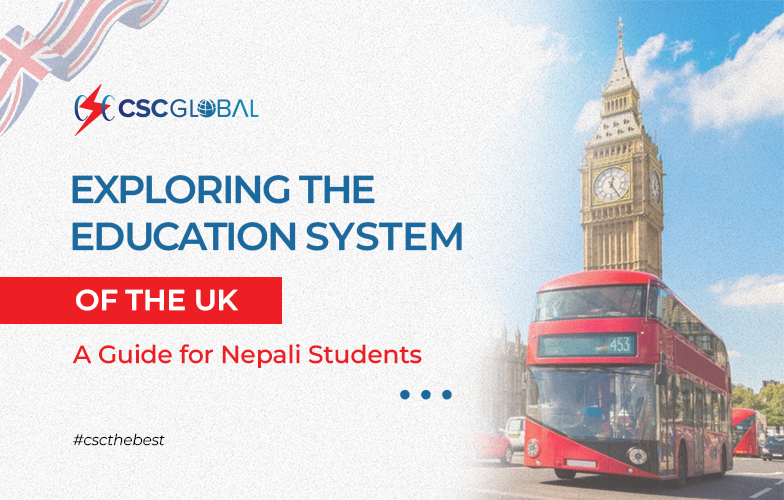The dream of studying in Australia is not just about getting a globally recognized degree, it’s also about building a future. For many Nepali students, Australia presents a unique pathway to Permanent Residency (PR) after graduation through programs in Australia for PR Opportunities.
But not all programs lead equally to PR. In 2025, as immigration trends continue to evolve, choosing the right course is more critical than ever.
In this blog, we explore the best programs in Australia for PR opportunities, the skills needed in the Australian job market, and how Nepali students can align their education with immigration pathways for a smooth transition from student to permanent resident.
Why Choose Australia for Education and PR?
Australia is home to some of the world’s top universities, offering degrees recognized across the globe. For Nepali students, it provides:
- High-quality education
- Culturally diverse environment
- Excellent post-study work rights (PSWR)
- Strong demand for skilled workers
- Streamlined immigration options
Australia’s General Skilled Migration (GSM) program is designed to attract international graduates with skills in demand. By choosing the right course, students can earn valuable points for PR and improve their chances of settling in the country.
Understanding Australia’s Skilled Occupation List (SOL)
The Australian government updates its Skilled Occupation List (SOL) regularly. Courses that align with occupations on this list offer better PR prospects.
Some sectors are consistently in high demand, including:
- Health and Medical Services
- Information Technology
- Engineering
- Trades and Construction
- Education
- Agriculture and Environment
Let’s look at the top programs that can increase your chances of PR after graduation. Here are some of the Best Programs in Australia for PR Opportunities:
1. Nursing and Midwifery
Why It’s in Demand:
Australia faces a growing need for healthcare professionals, especially after the COVID-19 pandemic. Registered Nurses are on almost every skilled occupation list in Australia.
Popular Courses:
- Bachelor of Nursing
- Master of Nursing Practice
- Bachelor of Midwifery
PR Pathways:
- Skilled Independent Visa (Subclass 189)
- State Sponsored Visa (Subclass 190)
- Graduate Temporary Visa (Subclass 485)
Average Salary:
AUD 65,000 – 90,000 annually
2. Information Technology (IT)
Why It’s in Demand:
From cybersecurity to software development, Australia’s digital transformation has led to a massive demand for IT professionals.
Popular Courses:
- Bachelor of Information Technology
- Master of Information Systems
- Master of Cybersecurity
PR Pathways:
- ICT Business Analyst
- Software Engineer
- Systems Administrator
Average Salary:
AUD 70,000 – 100,000 annually
3. Engineering
Why It’s in Demand:
Civil, mechanical, electrical, and mining engineers are crucial to Australia’s infrastructure and energy projects.
Popular Courses:
- Bachelor of Civil Engineering
- Master of Mechanical Engineering
- Bachelor of Electrical Engineering
PR Pathways:
- Engineers Australia (EA) accreditation
- Migration Skills Assessment (MSA)
Average Salary:
AUD 80,000 – 120,000 annually
4. Education and Teaching
Why It’s in Demand:
Australia has a strong demand for early childhood educators and secondary teachers, particularly in rural and regional areas.
Popular Courses:
- Bachelor of Education (Early Childhood)
- Master of Teaching (Secondary)
PR Pathways:
- Regional Sponsorship
- Skills Assessment by AITSL
Average Salary:
AUD 65,000 – 95,000 annually
5. Accounting and Finance
Why It’s in Demand:
While the competition is high, accountants remain on the medium- to long-term strategic skills list (MLTSSL).
Popular Courses:
- Bachelor of Accounting
- Master of Professional Accounting
PR Pathways:
- CPA/CA/IPA Membership for skills assessment
- State nomination preferred
Average Salary:
AUD 55,000 – 85,000 annually
6. Social Work and Community Services
Why It’s in Demand:
Australia requires qualified professionals to address increasing demands in mental health, aged care, and disability support.
Popular Courses:
- Bachelor of Social Work
- Master of Social Work (Qualifying)
PR Pathways:
- Accredited by AASW
- Options for subclass 189/190 and regional visas
Average Salary:
AUD 60,000 – 85,000 annually
7. Trades (Carpentry, Plumbing, Electrical)
Why It’s in Demand:
The Australian construction industry relies heavily on skilled tradespeople, and vocational courses offer a strong path to PR.
Popular Courses:
- Certificate III in Carpentry
- Certificate III in Plumbing
- Certificate III in Electrical Installation
PR Pathways:
- Trade Recognition Australia (TRA)
- Pathway through Job Ready Program
Average Salary:
AUD 60,000 – 100,000 annually
8. Agricultural Science and Environmental Studies
Why It’s in Demand:
Australia’s vast rural economy needs skilled professionals in agriculture, environmental management, and food technology.
Popular Courses:
- Bachelor of Agricultural Science
- Master of Environmental Management
PR Pathways:
- Regional PR sponsorship
- Occupations such as Agricultural Consultant or Environmental Scientist
Average Salary:
AUD 60,000 – 90,000 annually
9. Hospitality and Cookery
Why It’s in Demand:
With tourism rebounding, skilled chefs and hospitality managers are again in high demand, especially in regional areas.
Popular Courses:
- Certificate III in Commercial Cookery
- Diploma of Hospitality Management
PR Pathways:
- Regional work experience boosts PR chances
- Skills assessment by TRA
Average Salary:
AUD 50,000 – 80,000 annually
10. Medical and Allied Health
Why It’s in Demand:
Besides nurses, there is a high demand for physiotherapists, radiologists, and medical laboratory scientists.
Popular Courses:
- Bachelor of Physiotherapy
- Master of Medical Laboratory Science
PR Pathways:
Occupation must be accredited by relevant boards like AHPRA
Average Salary:
AUD 75,000 – 120,000 annually
How to Choose the Best Programs in Australia for PR Opportunities
Here are some tips to help you choose the most PR-friendly program:
- Check the Skilled Occupation List (SOL): Make sure your program aligns with an occupation on the MLTSSL or STSOL.
- Opt for Accredited Courses: Ensure your course is CRICOS-registered and meets the criteria of relevant skill assessing authorities.
- Study in Regional Areas: Students studying in regional Australia get extra points for PR and additional post-study work years.
- Focus on Skill Assessment: Complete any licensing or registration needed for your occupation.
- Plan Early: Understand the PR pathway while selecting your program, not after graduation.
PR Points System Overview for Best Programs in Australia for PR Opportunities
To qualify for permanent residency, you need to meet the minimum points requirement under Australia’s PR system. Here’s how you earn points:
| Criteria | Points |
| Age (25–32 years) | 30 points |
| English Proficiency (IELTS 8+) | 20 points |
| Australian Education | 5–10 points |
| Work Experience | 5–15 points |
| Regional Study | 5 points |
| Skilled Partner/Single Status | Up to 10 pts |
Note: The higher your points, the better your PR chances.
Why Nepali Students Should Act Now
With over 15,000+ Nepali students in Australia, competition is growing. But with the right guidance, timely course selection, and career planning, PR is a realistic goal.
CSC Global has helped thousands of Nepali students choose PR-worthy programs, prepare strong visa applications, and successfully settle in Australia.
FAQs
1. What is the easiest course to get a PR in Australia?
Nursing, teaching, and trades like carpentry or cookery are among the easiest due to consistent demand on the SOL.
2. Can I get PR immediately after graduation?
Not immediately. Most students apply for a post-study work visa (subclass 485) first, gain experience, and then apply for PR.
3. Is studying in regional Australia better for PR?
Yes, a regional study gives extra PR points and offers extended post-study work rights.
4. How many points do I need for Australian PR?
You generally need 65 points to be eligible for the skilled migration program, but higher points improve your chances.
5. Can CSC help me apply for PR after my studies?
Yes! CSC provides complete guidance from selecting the right course to preparing your PR file.





